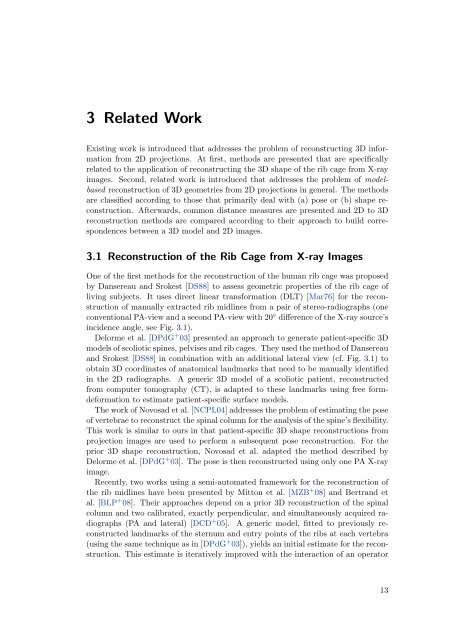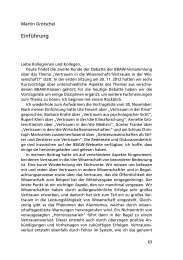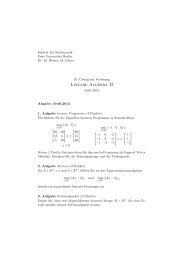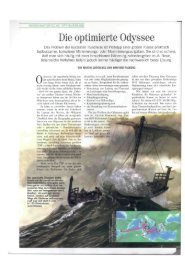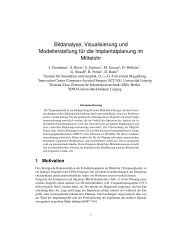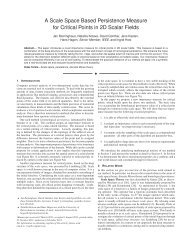3D Reconstruction of the Human Rib Cage from 2D Projection ... - ZIB
3D Reconstruction of the Human Rib Cage from 2D Projection ... - ZIB
3D Reconstruction of the Human Rib Cage from 2D Projection ... - ZIB
You also want an ePaper? Increase the reach of your titles
YUMPU automatically turns print PDFs into web optimized ePapers that Google loves.
3 Related Work<br />
Existing work is introduced that addresses <strong>the</strong> problem <strong>of</strong> reconstructing <strong>3D</strong> information<br />
<strong>from</strong> <strong>2D</strong> projections. At first, methods are presented that are specifically<br />
related to <strong>the</strong> application <strong>of</strong> reconstructing <strong>the</strong> <strong>3D</strong> shape <strong>of</strong> <strong>the</strong> rib cage <strong>from</strong> X-ray<br />
images. Second, related work is introduced that addresses <strong>the</strong> problem <strong>of</strong> modelbased<br />
reconstruction <strong>of</strong> <strong>3D</strong> geometries <strong>from</strong> <strong>2D</strong> projections in general. The methods<br />
are classified according to those that primarily deal with (a) pose or (b) shape reconstruction.<br />
Afterwards, common distance measures are presented and <strong>2D</strong> to <strong>3D</strong><br />
reconstruction methods are compared according to <strong>the</strong>ir approach to build correspondences<br />
between a <strong>3D</strong> model and <strong>2D</strong> images.<br />
3.1 <strong>Reconstruction</strong> <strong>of</strong> <strong>the</strong> <strong>Rib</strong> <strong>Cage</strong> <strong>from</strong> X-ray Images<br />
One <strong>of</strong> <strong>the</strong> first methods for <strong>the</strong> reconstruction <strong>of</strong> <strong>the</strong> human rib cage was proposed<br />
by Dansereau and Srokest [DS88] to assess geometric properties <strong>of</strong> <strong>the</strong> rib cage <strong>of</strong><br />
living subjects. It uses direct linear transformation (DLT) [Mar76] for <strong>the</strong> reconstruction<br />
<strong>of</strong> manually extracted rib midlines <strong>from</strong> a pair <strong>of</strong> stereo-radiographs (one<br />
conventional PA-view and a second PA-view with 20 ◦ difference <strong>of</strong> <strong>the</strong> X-ray source’s<br />
incidence angle, see Fig. 3.1).<br />
Delorme et al. [DPdG + 03] presented an approach to generate patient-specific <strong>3D</strong><br />
models <strong>of</strong> scoliotic spines, pelvises and rib cages. They used <strong>the</strong> method <strong>of</strong> Dansereau<br />
and Srokest [DS88] in combination with an additional lateral view (cf. Fig. 3.1) to<br />
obtain <strong>3D</strong> coordinates <strong>of</strong> anatomical landmarks that need to be manually identified<br />
in <strong>the</strong> <strong>2D</strong> radiographs. A generic <strong>3D</strong> model <strong>of</strong> a scoliotic patient, reconstructed<br />
<strong>from</strong> computer tomography (CT), is adapted to <strong>the</strong>se landmarks using free formdeformation<br />
to estimate patient-specific surface models.<br />
The work <strong>of</strong> Novosad et al. [NCPL04] addresses <strong>the</strong> problem <strong>of</strong> estimating <strong>the</strong> pose<br />
<strong>of</strong> vertebrae to reconstruct <strong>the</strong> spinal column for <strong>the</strong> analysis <strong>of</strong> <strong>the</strong> spine’s flexibility.<br />
This work is similar to ours in that patient-specific <strong>3D</strong> shape reconstructions <strong>from</strong><br />
projection images are used to perform a subsequent pose reconstruction. For <strong>the</strong><br />
prior <strong>3D</strong> shape reconstruction, Novosad et al. adapted <strong>the</strong> method described by<br />
Delorme et al. [DPdG + 03]. The pose is <strong>the</strong>n reconstructed using only one PA X-ray<br />
image.<br />
Recently, two works using a semi-automated framework for <strong>the</strong> reconstruction <strong>of</strong><br />
<strong>the</strong> rib midlines have been presented by Mitton et al. [MZB + 08] and Bertrand et<br />
al. [BLP + 08]. Their approaches depend on a prior <strong>3D</strong> reconstruction <strong>of</strong> <strong>the</strong> spinal<br />
column and two calibrated, exactly perpendicular, and simultaneously acquired radiographs<br />
(PA and lateral) [DCD + 05]. A generic model, fitted to previously reconstructed<br />
landmarks <strong>of</strong> <strong>the</strong> sternum and entry points <strong>of</strong> <strong>the</strong> ribs at each vertebra<br />
(using <strong>the</strong> same technique as in [DPdG + 03]), yields an initial estimate for <strong>the</strong> reconstruction.<br />
This estimate is iteratively improved with <strong>the</strong> interaction <strong>of</strong> an operator<br />
13


